By Andrew Hanlan, senior economist at Westpac:
The Australian economy is slowing, gradually, and the business mood has turned pessimistic as the year draws towards a close.
These were the key findings of the NAB business survey – conducted from November 21 to 29.
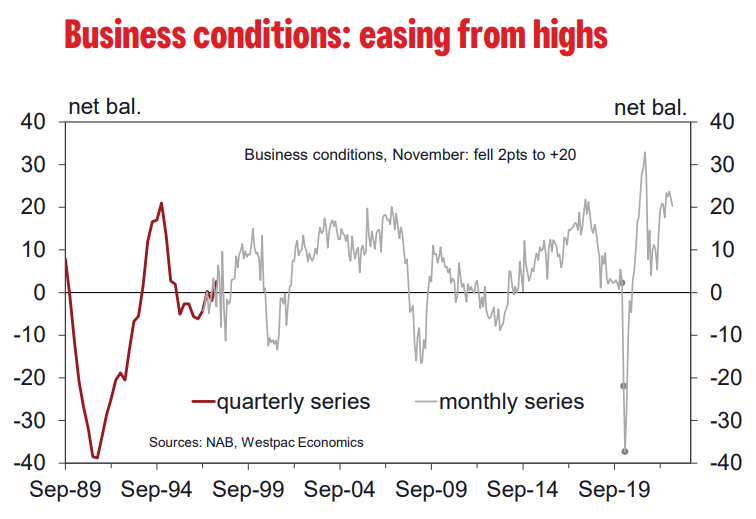
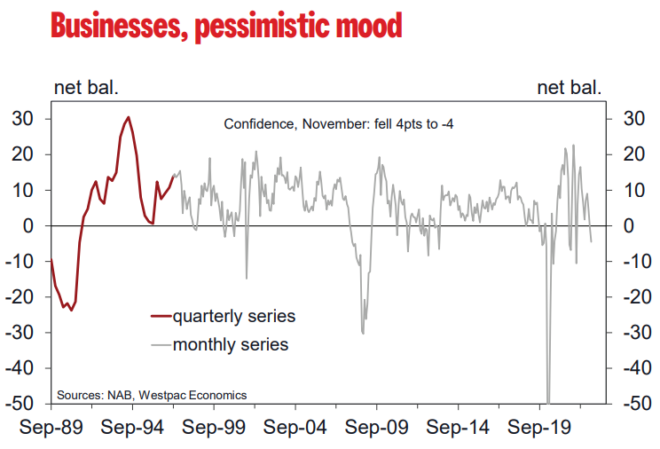
The business conditions index fell by 2pts in October and then fell by a further 2pts in November, to be at a still elevated +20.
By industry, over the past two months, conditions have reportedly eased across the consumer segments (both retail and recreation & personal), as well as wholesale and the finance, business & property group. By state, a trend slowing is evident across the eastern states over recent months.
In other signs that the economy is cooling, capacity utilisation edged lower in November, having peaked in August.
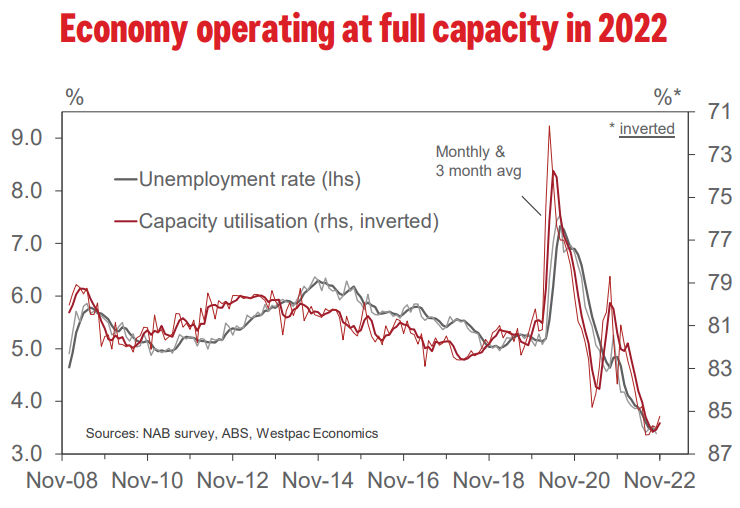
The burst of forward orders, associated with the reopening effect and supported by earlier policy stimulus, has passed. New orders hit a high of +17 in August and have slowed since then, moderating to +14 in September, then +8 and +5 for October and November.
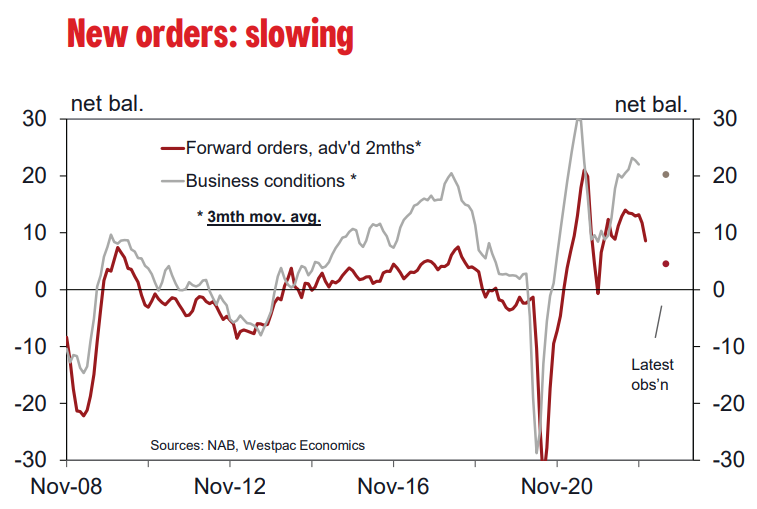
The context is that the Australian economy is in transition over the second half of 2022 – with growth to slow from the robust gains over the first half of the year, to an anaemic pace in 2023, as high inflation and rising interest rates impact.
Other private business surveys also suggest that a slowdown is underway. Indeed, the AiG surveys suggest that the slowdown is more pronounced, with conditions having moved below the breakeven 50 mark (see chart overleaf).
The business mood has turned pessimistic the NAB survey reports, with the confidence index down a further 4pts to -4. That is the first negative reading since last December.
Businesses recognise that the economy is losing momentum and that the outlook for 2023 is challenging as rapid interest rate rises by the RBA impact. For many businesses, margins are being squeezed by spiralling input costs – most recently, a spike in energy costs. In addition, the global economy is fragile in the face of interest rate rises and ongoing geopolitical tensions.
By industry, confidence is in negative territory across retail, wholesale, manufacturing, construction, and the finance, business & property segment. Confidence is also negative across each of the four major states.
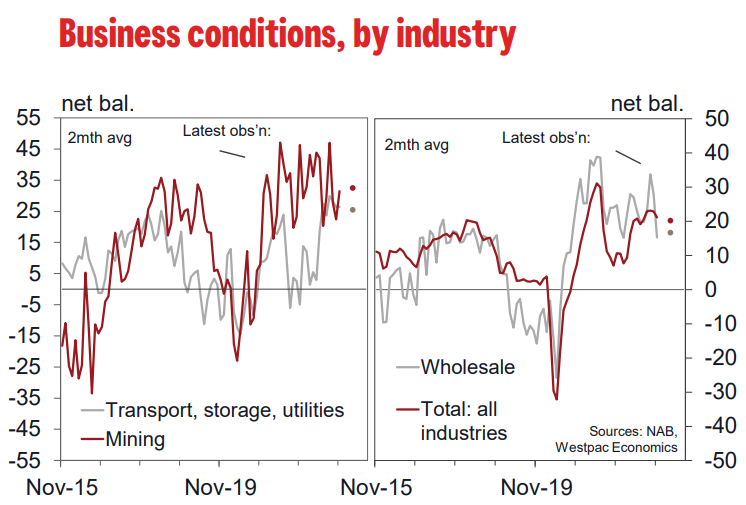
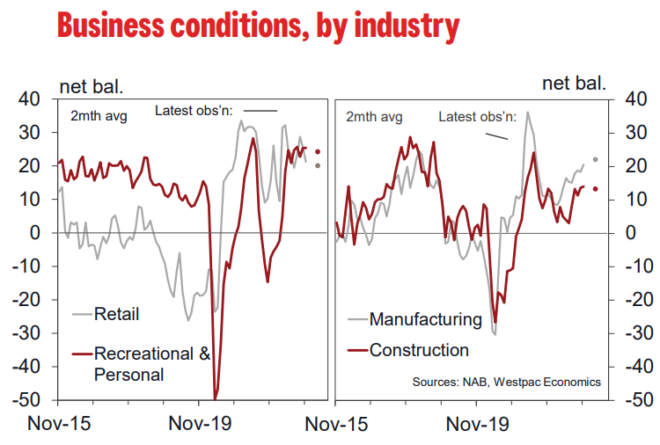
Business conditions detail for November revealed trading conditions down by 2pts to +28, profitability down 1pt to +20, and employment conditions down 1pt to +13.
There are some tentative signs that labour costs and overall upstream price pressures are off their highs – albeit they remain elevated.
Purchase costs are running around a 4% pace for the December, quarter, down from 4.5% for both the June and September quarters.
Labour cost are reportedly running around a 3% pace for the December quarter – down from 3.8% for the September quarter (a result boosted by the lift in the minimum wage).

